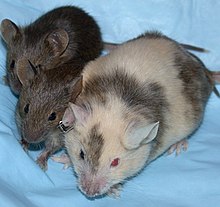
Back استهداف الجين Arabic Modificació gènica dirigida Catalan Gene-Targeting German Gene targeting Spanish هدفگیری ژنی Persian Gene targeting French Gene targeting Galician Penargetan gen ID Gene targeting Italian 遺伝子ターゲティング Japanese

Gene targeting is a biotechnological tool used to change the DNA sequence of an organism (hence it is a form of Genome Editing). It is based on the natural DNA-repair mechanism of Homology Directed Repair (HDR), including Homologous Recombination. Gene targeting can be used to make a range of sizes of DNA edits, from larger DNA edits such as inserting entire new genes into an organism, through to much smaller changes to the existing DNA such as a single base-pair change. Gene targeting relies on the presence of a repair template to introduce the user-defined edits to the DNA. The user (usually a scientist) will design the repair template to contain the desired edit, flanked by DNA sequence corresponding (homologous) to the region of DNA that the user wants to edit; hence the edit is targeted to a particular genomic region. In this way Gene Targeting is distinct from natural homology-directed repair, during which the ‘natural’ DNA repair template of the sister chromatid is used to repair broken DNA (the sister chromatid is the second copy of the gene). The alteration of DNA sequence in an organism can be useful in both a research context – for example to understand the biological role of a gene – and in biotechnology, for example to alter the traits of an organism (e.g. to improve crop plants).